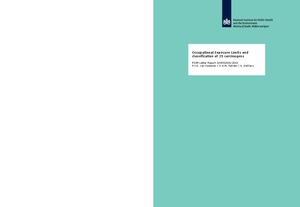Occupational Exposure Limits and classification of 25 carcinogens

Netherlands. National Institute for Public Health and Environment
RIVM - Bilthoven
2012
47 p.
carcinogens ; chemicals ; classification ; threshold limit values
Chemicals
English
Bibliogr.
"Occupational Exposure Limits (OELs) help to control exposure to dangerous substances in the workplace by setting the maximum amount of (air) concentration of a substance that can safely be allowed. These OELs can be laid down at a European level, national level or by industry. The regulations and interpretations of data for determining an OEL may vary between agencies, allowing the existence of multiple values for one substance within Europe. Besides the determination of OELs, substances are classified in a hazard class (classification). Also for classification different systems and different criteria exist within Europe. This letter report summarizes the OELs and carcinogenicity classification of 25 carcinogens. The data are obtained from the evaluations of the European Commission, the Scientific Committee on Occupational Exposure Limits (SCOEL), the International Agency for Research on Cancer (IARC), REACH1 registrants, the Netherlands, Germany and France. In addition, the Institute of Medicine (IOM) has estimated the impact of introducing an OEL on public health, health costs, the economy, society and the environment in Europe. The conclusions of the IOM are included in the overview. For each substance an overview of the current available data on OELs and carcinogenicity classes is given which allows a direct comparison between values or classifications."
Digital
The ETUI is co-funded by the European Union. Views and opinions expressed are however those of the author(s) only and do not necessarily reflect those of the European Union or the ETUI.